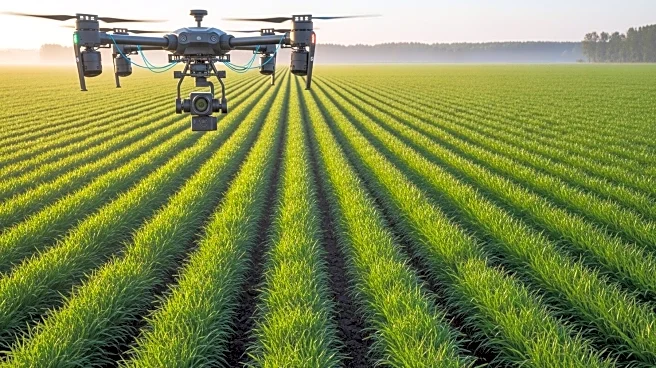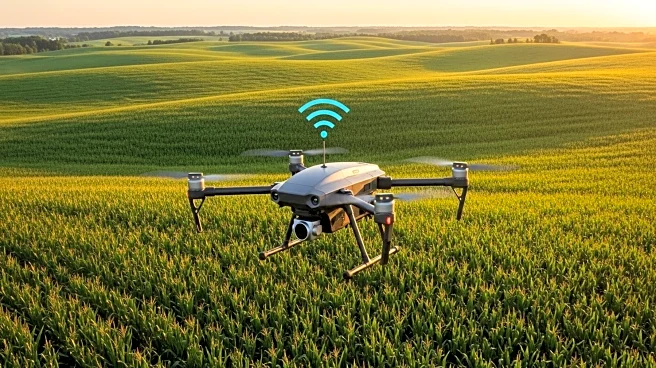What's Happening?
A recent study published in Nature introduces a multi-stage ensemble framework designed to classify pig vocalizations in noisy farm environments. The framework, known as the Pig Vocalization Monitoring and Classification (PVMC) model, aims to support systematic health and behavioral monitoring of pigs. The model processes raw audio data through four stages: noise filtering, vocalization segmentation, stress alert classification, and stress sense classification. The initial stage removes background noise, while subsequent stages classify vocalizations into categories such as coughs, screams, and contextual vocalizations. The final stage further categorizes these into emotional states like calm, feeding, frightened, or anxious. The study utilized datasets collected from pig farms in South Korea, employing advanced machine learning techniques to enhance classification accuracy.
Why It's Important?
This development is significant for the agricultural industry, particularly in improving animal welfare and farm management. By enabling early detection of diseases and stress through vocalization patterns, farmers can respond promptly to health concerns, potentially reducing livestock mortality and improving productivity. The framework's ability to operate in real-time under noisy conditions makes it a practical tool for farms, where environmental noise is a constant challenge. The integration of machine learning models like SEGAN+ and SqueezeNet demonstrates the potential of artificial intelligence in transforming traditional farming practices, offering a scalable solution for monitoring animal health and behavior.
What's Next?
The PVMC model's deployment in real-world farm environments could lead to broader adoption of AI-driven monitoring systems in agriculture. Future research may focus on refining the model's accuracy and expanding its application to other livestock. Additionally, collaborations with agricultural technology companies could facilitate the development of commercial products based on this framework. As the model is further tested and validated, it may influence policy discussions on animal welfare standards and the use of technology in farming.
Beyond the Headlines
The ethical implications of using AI in animal monitoring are noteworthy. While the technology promises improved welfare, it also raises questions about data privacy and the potential for surveillance. Ensuring that such systems are used responsibly and transparently will be crucial. Moreover, the success of this framework could inspire similar innovations in other sectors, highlighting the transformative power of AI in addressing complex challenges.












